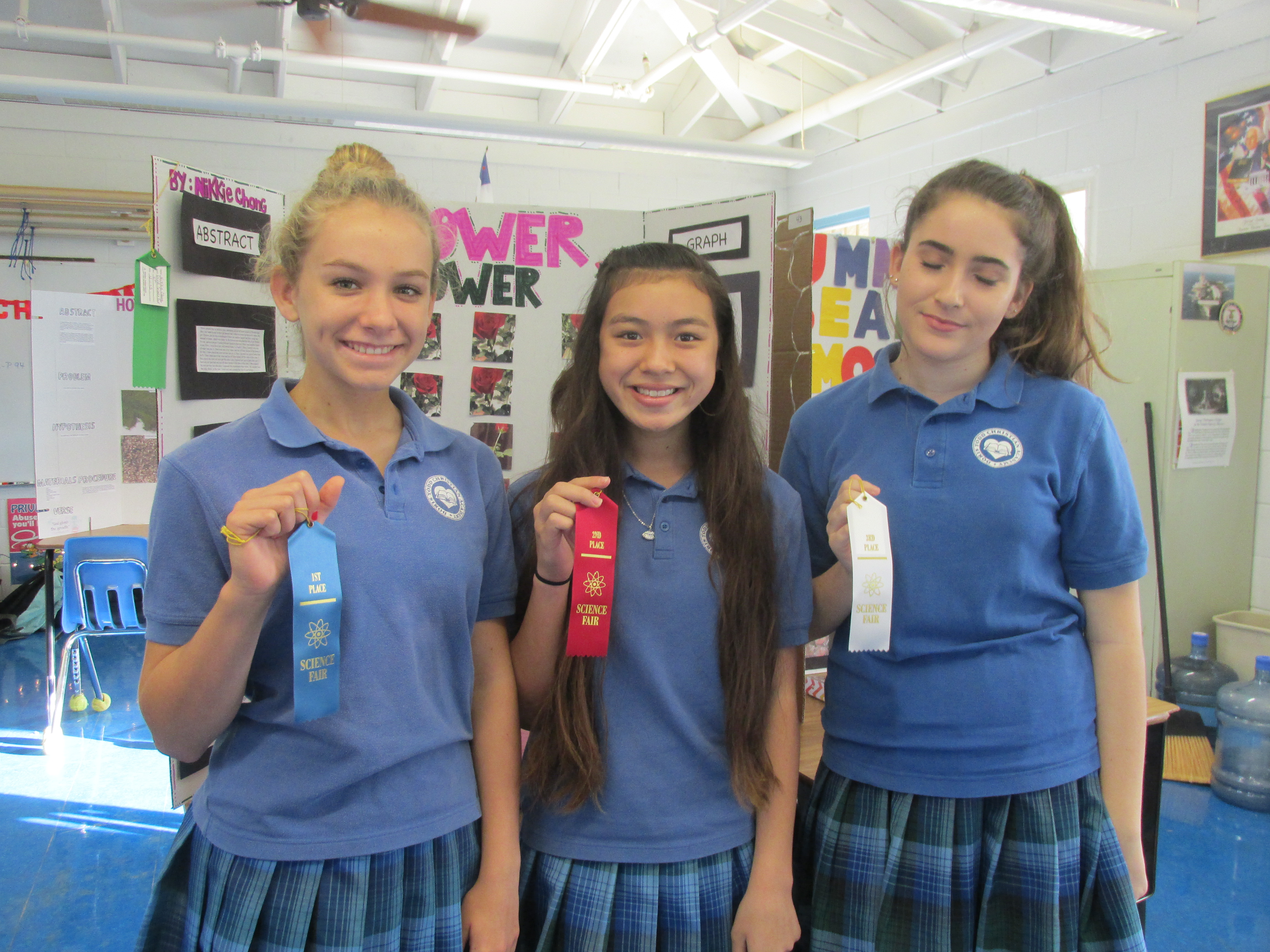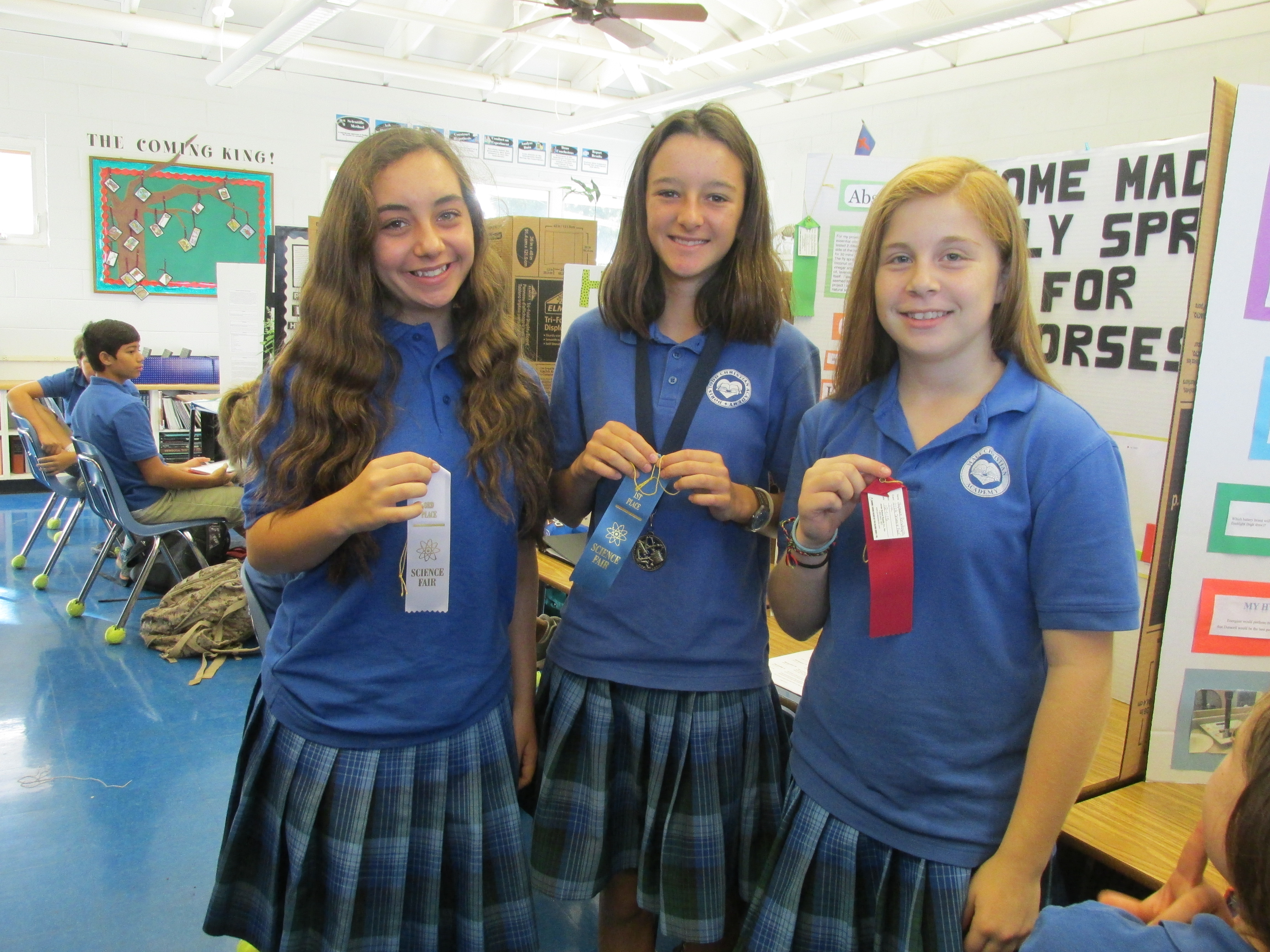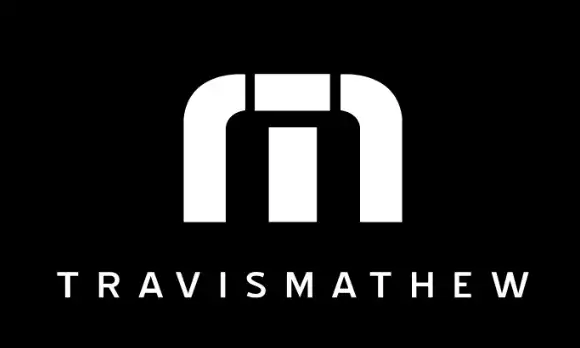Doris Todd Academy Holds Science Fair ‘Shark Tank’
All 48 middle school students at Doris Todd Christian Academy participated in this year’s science fair earlier this month.
Entering a project into the annual fair has been a middle school requirement at the academy since 2006.
Although there was no money involved, the competition at the Doris Todd Christian Academy Annual Science Fair was a bit like a middle school version of “Shark Tank,” with a panel of seven judges deciding which of the aspiring entrepreneurs and/or innovators would receive the prestigious award ribbons.
Middle School Science Teacher Shannon Sinclair, who is in her third year teaching at the school, guided the students through the process, teaching them details about the scientific method (see “The Scientific Method” below) they would need to apply to complete their fair projects.
“This was my third year preparing students for our annual science fair and to see the growth in the older students, as well and the excellent grasp of the project by the new sixth graders, truly encouraged me as a teacher,” said Sinclair. “Without a doubt, the students will benefit from the experience and hopefully carry with them the skills they’ve acquired into many different areas of their life as they continue their educational journey.”

First place winners in each grade are (left to right): Kaya Dugan, eighth grade; Keala Bouwens, seventh grade; and Zhara Battacharya, sixth grade.
The grand champion winner of this year’s fair was Keala Bouwens of Kula, a seventh-grader who loves horses.
Her idea for the fair was to come up with a safe spray for her horses that would repel flies. She conducted research on different natural products that she could combine into the spray, then wrote a paper, concluding with her hypothesis on what might work as the best and safest repellent.
Other seventh grade winners are Natalie Boody of Wailuku, who took second place, researching the best soil for growing basil, and Stephanie Reisdorph of Pā‘ia, who took third place with her project to determine whether the amount of salt in seawater affects its color.

Dorris Todd Science Fair eighth grade winners (left to right): Kaya Dugan, first place; Nikkie Chong, second place; and Laura Rowland, third place. Courtesy photo.
The eighth grade winners winners were Kaya Dugan of Kula, who took first place with her project determining if eye color effects the ability to see in dim light; Nikkie Chong of Wailuku, who took second, researching which liquid best extends the life of cut flowers; and Laura Rowland of Wailuku, who took third place, investigating what type of light bulb is best for plant growth
Sixth-grader Zhara Battacharya of Ha‘ikū took first place in her grade, investigating whether soda decreased bone density. Caden Abodeely took second place with a project that demonstrated how to make aircraft invisible to radar by using a lux meter. Jesse Sinclair took third place with his project to determine whether the amount of sugar in a candy recipe impacted its hardness.
There were many other interesting projects this year, said Sinclair.

Doris Todd Science Fair seventh grade winners (left to right): Natalie Boody, second place; Keala Bouwens, first place and grand champion; and Stephanie Reisdorph, third place. Courtesy photo.
“One student built a solar panel with her dad to find out the best time of day to collect and store solar energy,” said Sinclair.
“Another student investigated the best locations on Maui for AM radio reception.
Some of the fair’s winners will also participate in the February 2016 Maui County Science Fair, Sinclair said.
“I was most impressed by the confidence, enthusiasm and creativity of the overall winner,” said Lana Coryell, program manager at Hui No‘eau Visual Arts Center, who served as one of the judges. “Her project was unique, thoughtful and related to a real-world problem that she investigated through science—a skill that will serve her well beyond the seventh grade.

Sixth-grade winners of the Doris Todd Science Fair are (left to right): Caden Abodeely, second place; Zhara Battacharya, first place; and Jesse Sinclair, third place. Courtesy photo.
“I have been judging the Doris Todd Science Fair for several years,” said Craig Richter, a local tennis coach. “While I have always found the projects to be thoughtful and well-planned, this year’s were the highest quality that I have seen so far.
“More importantly, the teachers at Doris Todd take the science fair beyond just fulfilling a school requirement and receiving a grade,” said Richter. “They also use it to a teach a valuable skill—the scientific method—a thinking process that can and should be used throughout life.”
Other community members who served as judges this year were Valerie Richter, Dane Pickett, Chet Crain, Gary Fitt and Phil Winkler.
“Congratulations to all the students who worked so diligently to complete this year’s science fair projects and presentations!” added Coryell. “The overall quality of all the projects made it challenging to choose just a few winners!
The Scientific Method
Students were first introduced to the scientific method early in the school year and spent some time working with it on hypothetical problems to be solved, including understanding independent and dependent variables and the importance of constants and defining the control group.
They are then encouraged to come up with a question of their own to solve—something that interests them, since they work on the project for about three months.
Next, they do a background report on an area of interest and come up with a hypothesis (or educated guess) for the problem they are trying to solve.
During this part of the project, they learn to write a short paper using reputable scientific resources.
The next step of the scientific method is to set up an experiment to test the hypothesis. This includes writing another report called the investigation plan. Students need to consider what kinds of materials will be required to carry out the experiment. They also need to consider time and budget constraints, parental support to maintain safety and other factors.
Then they write a step-by-step procedure that they will carry out.
There are special rules related to working with human subjects as well as vertebrate animals, such as as Keala’s horse, and these must be considered before conducting the experiment.
If students wish to qualify for the Maui County Science Fair in February, all required forms must be filled out ahead of time.
Once the plan has been approved, they proceed with the experiment and keep a log book of all of the time they spend on the experiment, including their results.
Next, students analyze their data, draw a conclusion, assessing whether or not their hypothesis was accurate.
They share their results at the annual science fair in three ways: by creating a trifold board display; by writing a followup report of their data and conclusions, adding this to the previous two papers to create a final paper with all three parts; and by defending their project through interviews with judges.









